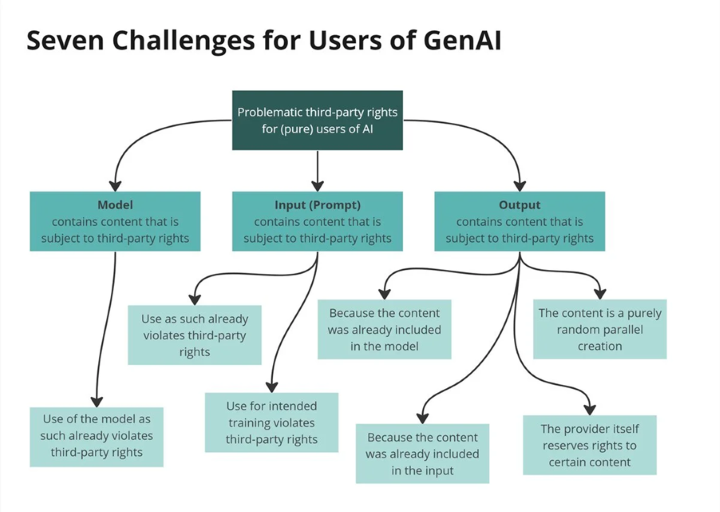8 Intellectual property rights
A key legal risk with using GenAI tools is that the datasets used to train the AI models often use and contain copyright material. For example, the internet scraping of online content to train GenAI models can be regarded as an infringing act under UK law.
Current UK copyright law, based on the Copyright, Designs and Patents Act 1988 (CDPA), is ill-equipped to handle the challenges posed by GenAI.
AI developers often use copyrighted content in training datasets without permission, raising infringement concerns. Section 17(2) prohibits reproducing substantial parts of protected works without consent, an issue at the core of ongoing cases like Getty Images v Stability AI [2025] EWHC 38 (Ch).
Authorship under UK law for computer-generated works also remains ambiguous – and this applies to AI-generated outcomes. Section 9(3) of the CDPA 1988 assigns authorship to whoever made the arrangements for creation, but determining this in AI contexts – programmer, prompter, or developer – is complex. The originality requirement further complicates matters, especially for content merely recombined by GenAI.
The UK Government is continuing to explore broadening the exception for text and data mining to support AI research. However, creative industries raised concerns about the lack of technical safeguards for opting out. Broader exceptions could fuel innovation but risk weakening IP protections without enforceable transparency requirements.
 Further reading
Further reading
If you are interested, you can learn more by reading A really risky business.
7 Client confidentiality




